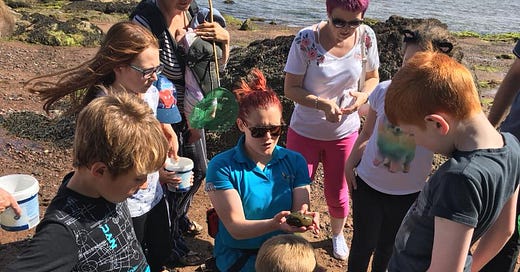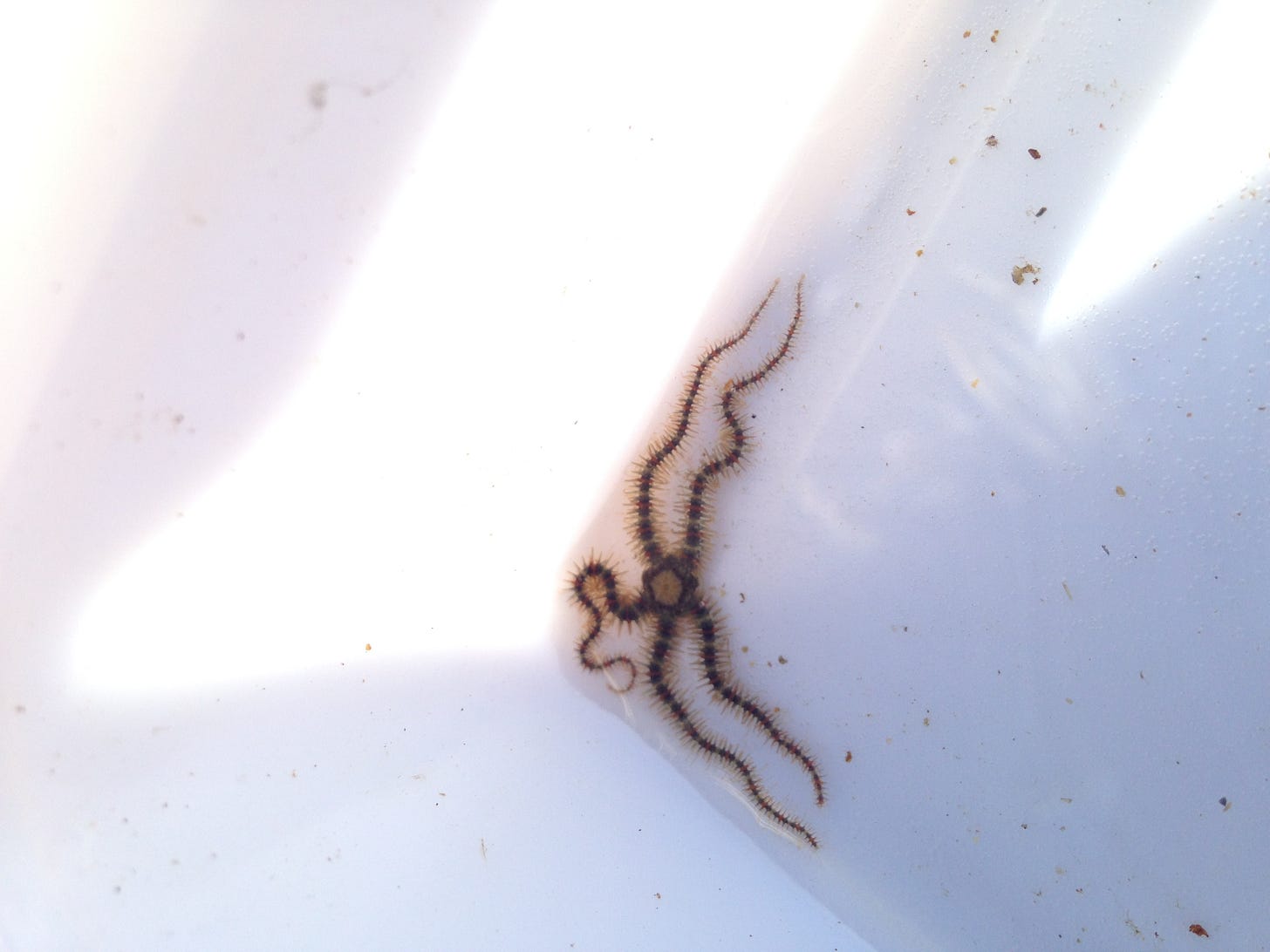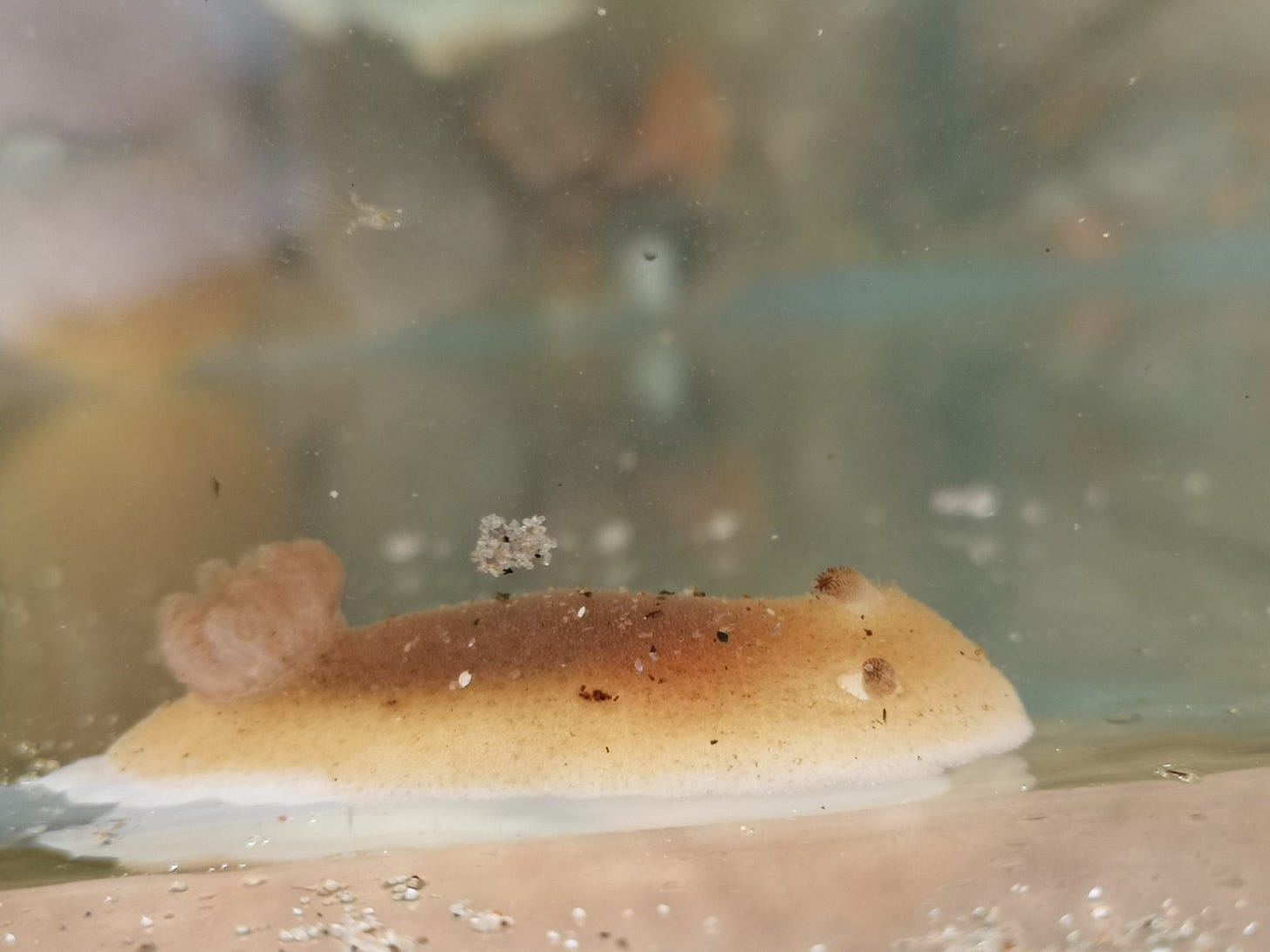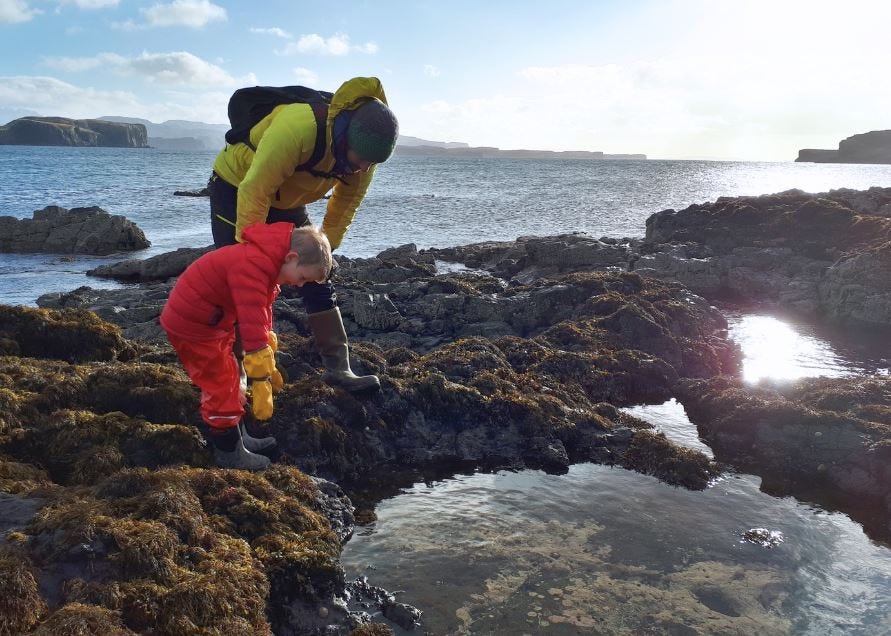Rockpooling Delights!
Marcia describes one of her favourite activities running seashore safaris along the rockpools in Rosemarkie
The draw of the seaside is impossible to resist during the summer months. Particularly in the Highlands, although the sea may be cold, the beaches are beautiful and the ice cream delicious. A variety of birds call overhead, the waves crash against the shore and there is nothing more to do than enjoy being there! If we’re lucky we may spot a pod of dolphins or an otter hunting amongst the seaweed. But mostly the sunshine and sea air are enough to keep us happy all day long.
But there is a magical environment hiding for us to discover in this landscape, that once explored, rewards us with a vast amount of weird and wonderful creatures.
Amongst the barnacles and limpets clinging to the rock there are wonderful peaks and troughs, a whole new world to discover. Small and large pools uncovered and exposed to an interested eye. What lies beneath these still surfaces, are they filled with seaweed? Are they full of rocks? Is there a fish hiding there, or a crab? Or is there something even more mysterious hiding from view?
This is the wonder of rock pools, their place in the landscape does not change, however the wildlife they support can change twice a day. Creatures happily existing along the seashore will suddenly find themselves left high and dry as the water creeps away from them, and if we are observant we can get a look at them before they once again disappear.
Over eight summers of rock pooling no session has been the same and we continue to make new finds. Here are some of my highlights.
Hermit crab (Pagurus bernhardus)
Hermit crabs are a common find at Rosemarkie shore, even if you’re just paddling in the water you should notice them scurrying out of your way at low tide. They are famous for not having a fully protective shell of their own, so they occupy empty shells they find on the sea floor, usually perriwinkles. These little hermits are by far the find that give me the most joy when on safari. They all seem to have little personalities of their own. Some are very confident and will crawl about on your hand, while others are shy and will keep their little claw door tightly shut to visitors. When on safari I always take a tank (my portable rockpool) with me, which we fill with sea water and add all of our finds to before the end of the session. This prevents our little friends from getting too stressed and allows us to watch them going about their natural behaviour. Last year we watched one hermit crab size up and then try out a new empty shell in the tank, although it decided it didn’t like the fit because it eventually returned to its original shell!
Photo by Hannah Jackson on Unsplash
Common Brittlestar (Ophiothrix fragilis)
A starfish very different from the common ones we’re used to finding, and well disguised at the bottom of a rockpool, as they are preyed upon by their common relatives! This is a species you have to be very careful with, as the name suggests, it will shed parts of its legs if it feels threatened and these long legs are important for extending out in to the water from the seabed in order to filter feed.
Light bulb sea squirt (Clavelina lapadiformis)
A very faithful find in one spectacular rockpool further up the shore at Rosemarkie. Sea squirts are barrel-shaped animals with two openings at their top end. Through one they take water in and through the other they squirt water out. These creatures are anchored in colonies to to the rock so we can’t remove them, but they’re a great thing to look out for by parting the seaweed. And they may be a seasonal find as some colonies seem to regress in the winter and re-grow in the warmer months. The first part of their name comes from their resemblance to an old fashioned filament light bulb, the second part from their common reaction of squirting out water when removed from the sea!
Sea Slug (Jorunna tomentosa)
A sea slug that is a yellow to sandy brown in colour and has a cute “bunny” appearance with its short little parapodia or “ears” and what looks like a fluffy tail. They feed on a variety of sponges and can be found from around the coast of Britain to the Mediterranean. It was a woman and her little girl who excitedly told us they had found it in one of the larger rockpools and when we put it in our portable rockpool it happily wandered around so we could watch it.
Sea hare (Aplysia punctata)
This one we found just this week on our fist safari of the season. In fact we found two mating! It was another keen eyed parent who spotted them, from a distance they looked just like the surrounding seaweeds. The were brown in colour with long thin parapodia, which gives them their common name of sea hare. They are common around British shores although there doesn’t seem to be many records for the Easter Ross area, so if you find them while out on your own adventures please send your records to the Highland Biological Recording Group.
Read more…
Marcia O'Hara is High Life Highland's dedicated Countryside Ranger for Easter Ross and South East Sutherland. She infuses her love for nature into every aspect of her work, from community clean-ups to guided events and workshops. With an academic foundation in Environmental Biology, Marcia excels in bringing fresh perspectives to her sessions, making science come alive in community learning. Known for her ability to engage and inspire, Marcia has a special interest in woodland botanics, including fungi, lichen, and trees. Her unique approach and deep connection to nature have made her an invaluable asset in preserving the natural beauty of the region she covers.












